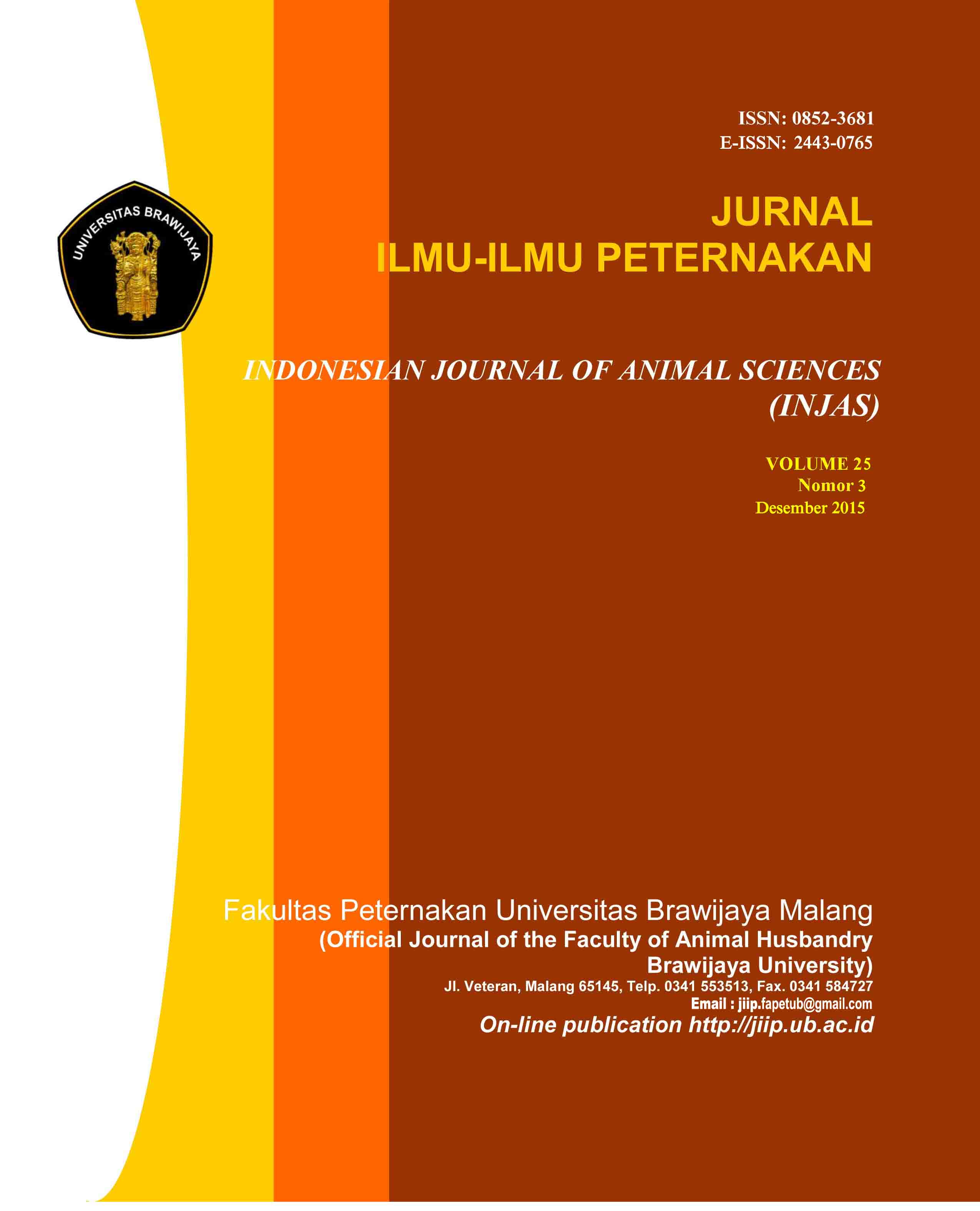Performans produksi burung puyuh (Coturnix coturnix japonica) dengan perlakuan tepung limbah penetasan telur puyuh
DOI:
https://doi.org/10.21776/ub.jiip.2015.025.03.07Abstract
The research aimed to evaluate the utilization of Japanese quail hatchery waste powder in feed on feed intake, egg production, egg mass and feed conversion ratio. The materials used were 4 weeks old 160 Japanese quails with an average weight of 94.19 ± 7.36 gram. The experiment used a completely randomized design (CRD) with four treatments (0%, 9%, 12%, and 15% of Japanese quail hatchery waste powder in feed) and five replications. Parameters observed were feed intake, egg production, egg mass and feed conversion ratio. The data were analysed using analysis of variance and continued with Duncan's multiple range test 5% level. The results showed that the addition of Japanese quail hatchery powder in feed had a significant effect (P>0.05) on feed intake and egg mass, but not on egg production and feed conversion ratio. The conclusion of this study was Japanese quail hatchery waste could be used on quail’s feed until 15% without changing feed intake, egg production, egg mass and feed conversion ratio.
Â
Keywords: Japanese quail hatchery waste, performance production, Japanese quailDownloads
Published
How to Cite
Issue
Section
License
Authors who publish with this journal agree to the following terms:- Authors retain copyright and grant the journal right of first publication with the work simultaneously licensed under a Creative Commons Attribution License that allows others to share the work with an acknowledgment of the work's authorship and initial publication in this journal.
- Authors are able to enter into separate, additional contractual arrangements for the non-exclusive distribution of the journal's published version of the work (e.g., post it to an institutional repository or publish it in a book), with an acknowledgment of its initial publication in this journal.
- Authors are permitted and encouraged to post their work online (e.g., in institutional repositories or on their website) prior to and during the submission process, as it can lead to productive exchanges, as well as earlier and greater citation of published work (See The Effect of Open Access).
















